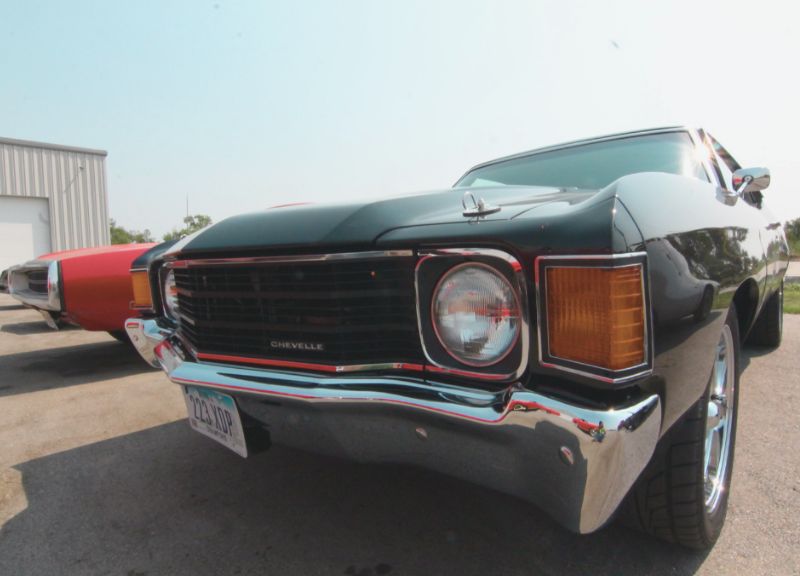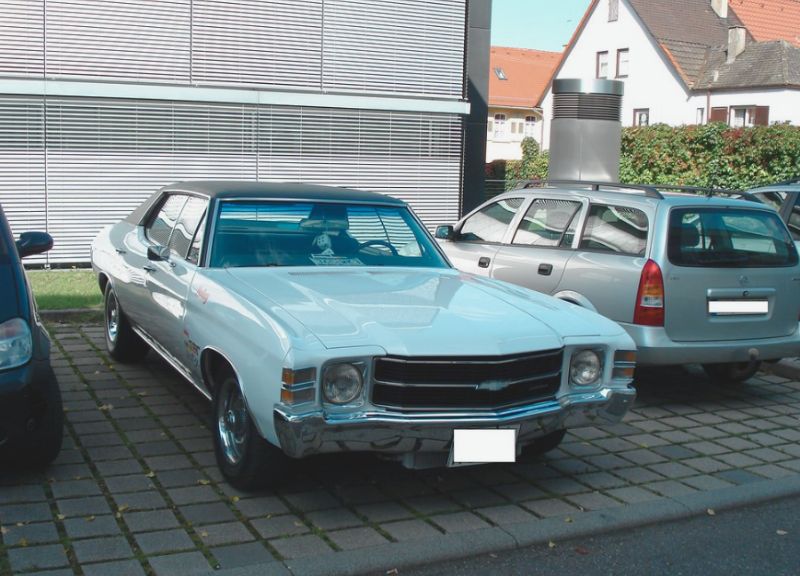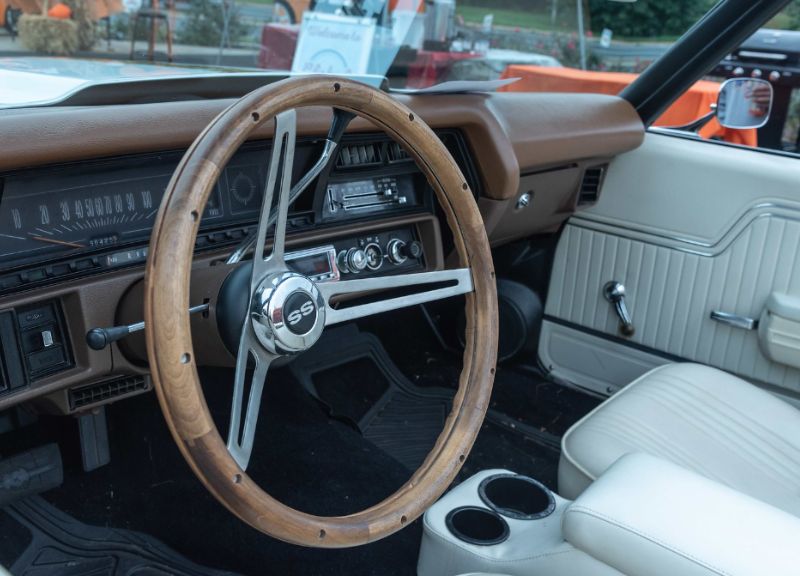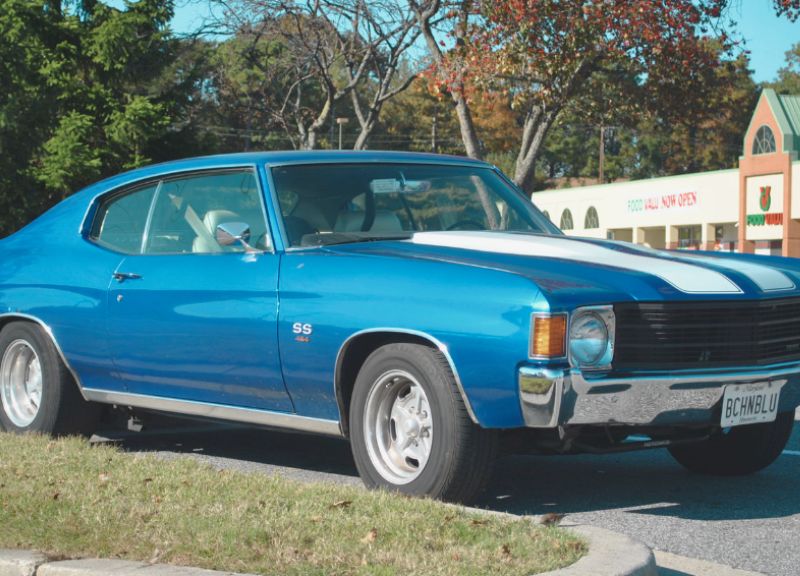Are you looking for the difference between the 71 and 72 Chevelle? You’ve come to the right place! If you’re a fan of classic American muscle cars, then you’re familiar with the Chevrolet Chevelle.
This iconic car was produced from 1964 to 1977, and during that time, it underwent many changes.
In this blog post, we’ll break down the subtle yet significant variations between these two classic cars. Whether you’re a seasoned collector or a curious enthusiast, you’ll gain a deeper understanding of the unique features that make each year’s model stand out.
So buckle up and get ready to discover the difference between these two models!
Table of Contents
Overview Of 1971 and 1972 Chevelle

If you’re a fan of muscle cars, then you’re familiar with the Chevrolet Chevelle. Produced from 1964 to 1977, the Chevelle was one of the most popular muscle cars of its time. The second-generation Chevelle, which includes the 1971 and 1972 models, is particularly sought after by collectors and enthusiasts.
The 1971 and 1972 Chevelles were available in various body styles, including coupe, sedan, and wagon. The Chevelle SS, the high-performance version of the car, was also available in both years. However, there were some key differences between the two models.
One of the biggest differences between the 1971 and 1972 Chevelles was the wheelbase. The 1971 model had a longer wheelbase than the 1972 model, meaning it had a more spacious interior. The 1971 model also had a wider range of powerful V8 engines than the 1972 model.
Another difference between the two models was the grille. The 1971 Chevelle had a single-piece chrome molding for the grille, while the 1972 model had four individual moldings. This gave the 1971 model a more distinctive look than its successor.
Despite these differences, the 1971 and 1972 Chevelles were popular with car enthusiasts and remain highly sought after today. Whether you’re looking for a classic muscle car to restore or want to admire the beauty of these iconic vehicles, the 1971 and 1972 Chevelles are worth considering.
Related: The difference between 68 and 69 Camaro.
The Difference Between The 71 And 72 Chevelle
Engine and Performance
Regarding the engine and performance of the 71 and 72 Chevelle, there are some notable differences. Let’s look at the engine specifications, horsepower, and torque.
Engine Specifications
The 1971 Chevelle was powered by a range of V8 and V6 engines, with the highest-performing option being a 454 cubic-inch V8 engine.
On the other hand, the 1972 Chevelle was powered by a range of V8 engines, with the highest-performing option being a 402 cubic-inch V8 engine. The base 250 six wasn’t available in the Heavy Chevy, nor was the 454.
Horsepower and Torque
Regarding horsepower and torque, the 1971 Chevelle had a range of options. The highest-performing engine, the 454 cubic inch V8, produced up to 365 horsepower and 465 lb-ft of torque.
The 1972 Chevelle, on the other hand, had a range of V8 engines that produced up to 350 horsepower, with the highest-performing option being the 402 cubic-inch V8 engine.
Overall, the 1971 Chevelle had a larger engine and produced more torque than the 1972 Chevelle. However, the 1972 Chevelle had a slightly higher horsepower output.
In conclusion, the engine and performance differences between the 71 and 72 Chevelle are significant. The 71 Chevelle had a larger engine and more torque, while the 72 Chevelle had a slightly higher horsepower output.
Chevrolet Chevelle SS 1971 Sound
Exterior Features
Regarding exterior features, the 1971 and 1972 Chevelles have some distinct differences. Let’s take a closer look at the appearance, emblems, and trim levels of these two classic cars.
Appearance

The 1971 Chevelle featured a redesigned front and rear end, giving it a longer, leaner look with a more aerodynamic appearance.
The front grille was redesigned to incorporate a center divider, and the headlights were integrated into the grille itself. The vehicle’s rear features a rounded design with two distinctive square taillights.
In contrast, the 1972 Chevelle retained a similar body style to the 1971 model but with a few notable changes. The blacked-out grille was replaced with a chrome-trimmed grille, and the taillights were changed to a more traditional round shape.
Overall, the 1972 model had a slightly more refined appearance than the 1971 model.
Related: The difference between Highlander and Grand Highlander.
Emblems and Trim Levels
One of the most significant differences between the 1971 and 1972 Chevelles was the emblems and trim levels. The 1971 model featured emblems with a black background and silver lettering, while the 1972 model had emblems with a silver background and black lettering.
Regarding trim levels, the 1971 Chevelle was available in various options, including the base model, Malibu, SS, and SS 454. The 1972 model had a similar range of trim levels but with a few notable changes. The base model was renamed the Chevelle Deluxe, and the SS 454 was replaced with the SS 396.
Overall, the exterior features of the 1971 and 1972 Chevelles had a few distinct differences. While the 1971 model had a more aerodynamic appearance and blacked-out grille, the 1972 model had a more refined appearance with chrome-trimmed grille and round taillights.
Additionally, the emblems and trim levels varied between the two models, offering different options for buyers.
Interior Features

When it comes to interior features, there are a few differences between the 1971 and 1972 Chevelle models. One of the most noticeable differences is the bucket seats.
In 1971, bucket seats were available as an option, but in 1972, they were standard equipment. This means that if you’re looking for a Chevelle with bucket seats, you’ll have an easier time finding a 1972 model.
Another difference between the two models is the air conditioning system. In 1971, air conditioning was an option that could be added to any Chevelle model. However, in 1972, air conditioning was only available on certain models.
If you’re looking for a Chevelle with air conditioning, you’ll want to make sure you’re looking at a 1971 model or a 1972 model with the optional air conditioning system.
In terms of overall interior space, the two models are similar. The 1971 and 1972 models offer spacious interior with plenty of room for passengers.
However, the interior design of the two models is slightly different. The 1971 model features a more squared-off dashboard, while the 1972 model has a more rounded dashboard design.
Overall, when it comes to interior features, there are some differences between the 1971 and 1972 Chevelle models. If you’re looking for a Chevelle with bucket seats or air conditioning, you’ll want to pay attention to the model year.
However, in terms of overall interior space and design, the two models are fairly similar.
Variants and Models
If you’re looking to buy a 1971 or 1972 Chevelle, you’ll find several variants and models. Let’s take a closer look at the different options available.
Malibu
The Malibu was the base model for both the 1971 and 1972 Chevelles. It was available as a hardtop, coupe, or wagon. The Malibu had a simple, understated design and was perfect for those who wanted a reliable, affordable car without any frills.
SS
The Super Sport (SS) was the sportier version of the Chevelle. It was available as a hardtop or convertible with a more aggressive design. The SS also had a more powerful engine, making it a popular choice for those who wanted a high-performance car.
El Camino
The El Camino was a unique model that combined the utility of a pickup truck with the style of a Chevelle. It was available as a base model or an SS and was perfect for those who needed a vehicle that could haul cargo but still wanted a stylish ride.
Wagon
The wagon was the largest and most practical model of the Chevelle. It was available as a base model or an SS and had plenty of room for passengers and cargo. The wagon was a popular choice for families who needed a reliable car for long road trips.
Hardtops and Coupes
The hardtop and coupe models were both available as a base model or an SS. The hardtop had a sleek, streamlined design and was perfect for those who wanted a sportier look. The coupe had a more traditional design but was still a popular choice for those who wanted a stylish car.
Regarding differences between the 1971 and 1972 models, there were no major changes in the variants and models available. However, it’s worth noting that the 1972 Chevelle had a slightly different grille design than the 1971 model.
Overall, the 1971 and 1972 Chevelles were both great cars with a variety of options to choose from. Whether you wanted a reliable family car or a high-performance sports car, there was a Chevelle that would meet your needs.
Special Editions and Clones
If you’re looking for a ’71 or ’72 Chevelle, you might come across some special editions and clones. Let’s look at these and how they differ from the regular models.
Super Sport (SS)

The Super Sport (SS) was a performance package available on the Chevelle from 1964 to 1973. In 1971 and 1972, the SS package was available on the Malibu and the Malibu Sport Coupe. The SS package included a 350 or 402 V8 engine, heavy-duty suspension, and special exterior and interior trim.
Clones
A clone is a Chevelle modified to look like a more expensive or rare model. For example, someone might take a standard Chevelle and add SS badges, stripes, and other SS-specific features to make it look like an SS model.
Clones can be difficult to identify, so it’s important to research before buying a Chevelle advertised as a special edition. If you’re looking for a true SS model, check the VIN (Vehicle Identification Number) and other identifying features to ensure that it’s not a clone.
In conclusion, special editions and clones can add to the appeal of a ’71 or ’72 Chevelle, but it’s important to know what you’re getting before purchasing. Do your research and verify that any special edition Chevelle is authentic.
Legacy and Impact on American Culture
If you’re a fan of American muscle cars, you’ve undoubtedly heard of the Chevrolet Chevelle. This iconic vehicle left a lasting impression on American culture, and the 1971 and 1972 models, in particular, are still highly sought after by collectors today.
One of the reasons the Chevelle was so popular was its performance on the drag strip. With powerful LS6 engines and sleek, aerodynamic designs, these cars were built to go fast.
They were a favorite among drag racers, and they helped cement Chevrolet’s reputation as a leader in the muscle car industry.
But the Chevelle wasn’t just a racing machine. It was also a symbol of American ingenuity and craftsmanship. The attention to detail and the quality of the materials used in its construction were second to none, and this helped make it one of the most beloved cars of its time.
Today, the Chevelle is still celebrated by car enthusiasts worldwide. Its legacy lives on through car shows, museums, and online communities, where fans can share their love for this iconic vehicle.
So whether you’re a die-hard fan of American muscle cars or just appreciate a well-built automobile, the 1971 and 1972 Chevrolet Chevelles will leave a lasting impression.
Identifying a 1971 and 1972 Chevelle
If you’re looking to identify a 1971 or 1972 Chevelle, there are a few key things to look out for. One way to identify the year of a Chevelle is by checking the Vehicle Identification Number (VIN).
The VIN can be found on the dashboard, driver’s side door jamb, or engine block. The fourth and fifth digits of the VIN will tell you the model year of the Chevelle. For example, if the fourth and fifth digits are “71”, then the car is a 1971 model.
Another way to identify a 1971 and 1972 Chevelle is by checking the lenses on the taillights and front turn signals. The 1971 Chevelle had a single-lens taillight, while the 1972 model had a two-lens taillight. The front turn signal lenses on the 1971 model were amber, while the 1972 model had clear lenses with amber bulbs.
In addition to the VIN and lenses, there are other differences between the 1971 and 1972 Chevelles. The grille on the 1971 model had a one-piece chrome molding, while the 1972 model had four individual moldings. The 1971 model also had a different hood than the 1972 model, with a more prominent power bulge.
While there are some differences between the 1971 and 1972 Chevelles, they are both part of the second generation of Chevelles and share many similarities.
Both models were available with various engines, including the powerful LS5 454 V8. The Chevelle was also available in various body styles, including coupe, sedan, and station wagon.
In conclusion, if you’re looking to identify a 1971 or 1972 Chevelle, there are a few key differences to look out for, including the VIN, lenses, grille, and hood. However, both models share many similarities and are part of the iconic second generation of Chevelles.
Conclusion
In conclusion, the 1971 and 1972 Chevelles have a lot of similarities, but there are also some key differences between the two models. The most noticeable difference is the grille design, with the 1971 model featuring a split grille and the 1972 model having a single-bar grille.
Other differences include the taillights, with the 1971 model having a more rectangular shape and clear lenses, while the 1972 model has round tail lights with red lenses. Additionally, the 1972 model has larger wheel arches and a lower hood line than the 1971 model.
The engine options also varied between the two models. The 1971 model was available with either a 6-cylinder or a V8 engine, with the V8 engine having a displacement of 5.7L and rated at 300 horsepower. In contrast, the 1972 model had lower horsepower ratings across the board due to new CAFE standards.
Regarding trim, the 1971 model has five pieces of stainless trim, while the 1972 model has two or four pieces, depending on the model. The height of both models is the same, but the 1972 model is slightly longer.
Overall, the 1971 and 1972 Chevelles are both classic muscle cars with their unique features and characteristics.
Whether you prefer the split grille and rectangular tail lights of the 1971 model or the single-bar grille and round tail lights of the 1972 model, both are great options for any car enthusiast looking for a powerful and stylish ride.







